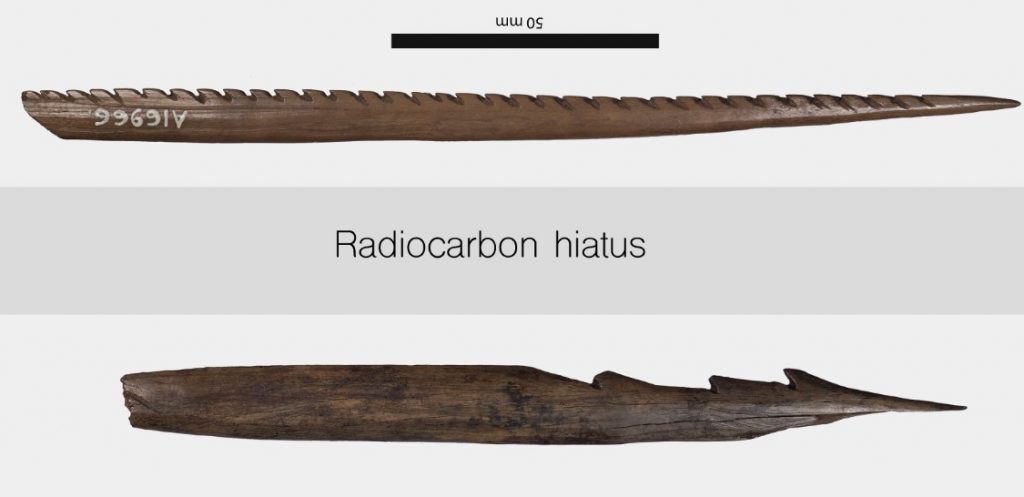Press release: Where did all the hunters go?
PRESS RELEASE: Stone Age fishing spears used as proxies for cultural transition

During the Mesolithic period (11,000 – 6,000 cal BP), Denmark was a patchwork of lakes used as fishing grounds by hunter-gatherers.
Many of their possessions such as harpoons and bone points used as leisters were lost into the lake, buried in cold anaerobic sediments, decay was limited and many were exquisitely preserved, only to be recovered when the peat was cut in the 20th century.
Over the last century, peat became a valuable resource due to a demand for fuel, with several metres of peat suddenly removed. It was during these peat cutting campaigns, that some of the best-preserved Stone Age sites in Northern Europe were uncovered. Denmark, despite its small size, became a treasure trove of Mesolithic culture.
The Maglemose culture first described more than one hundred years ago, is one of Denmark’s great gifts to prehistory. It represents the earliest phase of a permanent occupation in Denmark after the last Ice Age. Notable are its so-called barbed bone points, used probably to spear fish, which are one of the most iconic artefacts of the European Mesolithic.
Never previously subjected to scientific analyses, an international team led by Theis Jensen of the Globe institute from the University of Copenhagen/York and Matthew Collins from University of Cambridge/Copenhagen, have discovered that rather than unifying the Maglemose, the barbed bone points divide the Maglemose right down the middle.
In their new paper published in Scientific Reports, the researchers amassed a large collection of samples and were able to extract sufficient bone protein to both identify the species to make the points and to date the points themselves. Theis was surprised by the results “as we began to plot up the data, it fell neatly into two clusters, the radiocarbon dates and the animals used to make the points split them neatly into two groups”. Initially, sceptical his colleague, archaeologist from Saxo Mikkel Sørensen said: “at first it seemed too simplistic, but then we began to see that by the bone points matched a change in the way stone tools were manufactured”. As more and more radiocarbon dates were amassed, another surprise “there was a clear 600-year gap in the data” says Jesper Olsen of Aarhus University. “A lack of dates most probably indicates that there were no bone points being preserved” he explains. The reason for this remains unknown, but data from neighbouring countries suggest that the water levels in the lakes suddenly dropped during this period due to a very dry climate. This may have forced hunter-gatherers to relocate.
The team concludes that the once all-encompassing Maglemose culture actually represents two different cultures. “My guess would be that the first are hunter-gatherers migrating into Denmark from southwest about 11,000 years ago, the second from the northeast about 1,700 years later”, says Theis. “Our results set up a whole new archaeological framework for forthcoming genetic studies”, he smiles.
Read the press release from Globe Institute at the University of Copenhagen here
